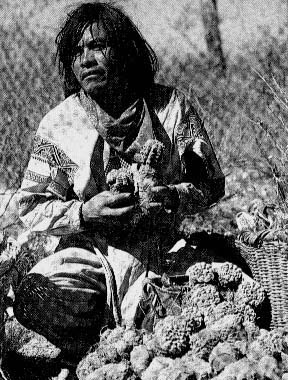Hueco Tanks is an area of low mountains in El Paso County, Texas, USA. It is located in a high-altitude desert basin between the Franklin Mountains to the west and the Hueco Mountains to the east.
The syenite rock formation is covered with 'desert patina' (visible in the image below), the result of thousands of years of weathering of the rock surface by sun, sand, and water; the site is culturally and spiritually significant to many Native Americans,, such as the Mescalero Apache, the Kiowa, the Hopi, , and the Pueblo people. This significance is partially manifested in the pictographs (rock paintings) that can be found throughout the region, some of which are thousands of years old. Hueco Tanks contains the single largest concentration of mask paintings by Native Americans in North America, of which hundreds exist at this site.

This is a video taken by a local showing the grounds in detail!
Enjoy!
Culture and Customs of the Apache Indians by Veronica E. Valarde Tiller



